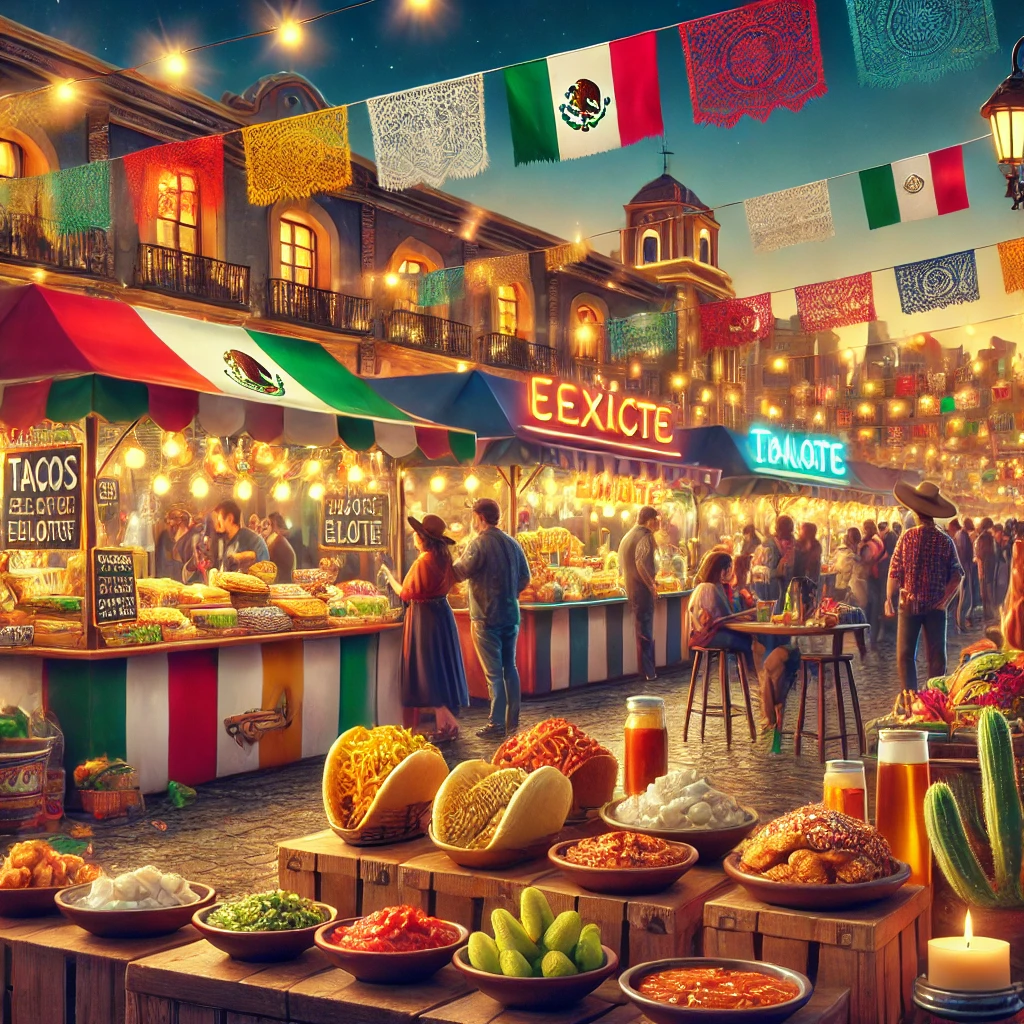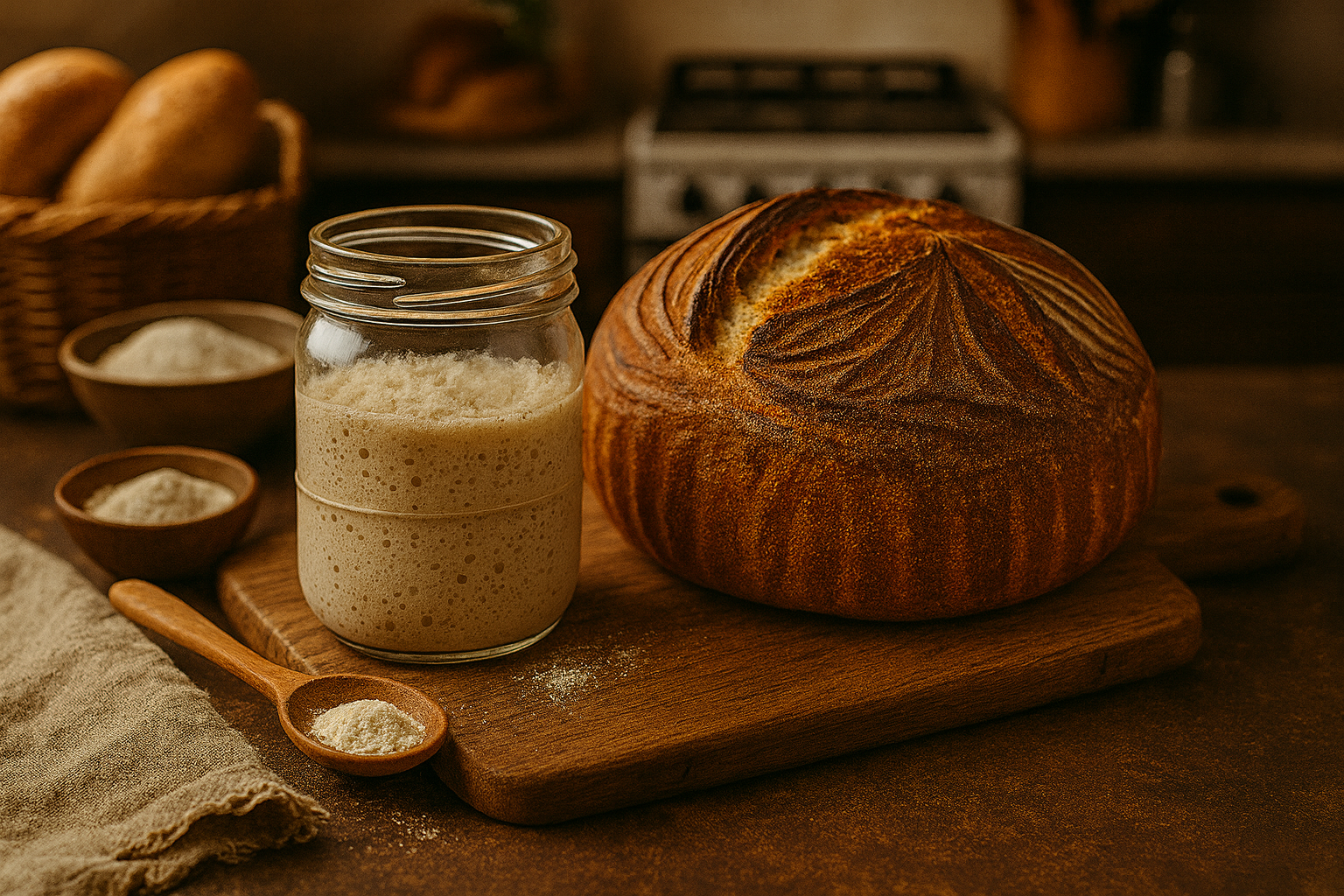Table of Contents
Introduction to Mexico’s Street Food Culture
Mexico boasts a street food culture that is as vibrant and rich as its history and traditions. Deeply embedded in the daily lives of its citizens, street food serves not only as an affordable means of sustenance but also as a celebrated aspect of social gatherings and community interactions. From bustling city streets to small towns, the enticing aroma of freshly prepared dishes fills the air, inviting passersby to indulge in a unique gastronomic experience.
The origins of street food in Mexico date back to ancient civilizations, where it was common for vendors to sell staples such as tamales and atole. Over time, these street-side meals evolved, influenced by the country’s diverse geography and the melding of indigenous and Spanish culinary traditions. Today, street food represents a microcosm of Mexican culture, showcasing local ingredients, flavor profiles, and cooking techniques that vary significantly from region to region.
This rich tapestry of street food includes an array of options, from tacos filled with marinated meats to elotes, which are grilled corn on the cob slathered with toppings. Popular choices also feature quesadillas, gorditas, and tortas, each offering a distinct flavor and culinary experience. Moreover, street food is not limited to savory dishes; sweet treats such as churros and frutas con chile are equally prominent. The accessibility of these beloved foods has enabled street vendors to become an integral part of the culinary landscape, promoting a sense of community and sharing among locals and visitors alike.

In essence, Mexico’s street food culture is an exquisite reflection of the country’s heritage, unifying its past and present. In the following sections, we will delve deeper into specific dishes and venues, exploring the tantalizing offerings that await within this dynamic food scene.
Must-Try Street Foods in Mexico
Mexico’s vibrant street food scene offers a tantalizing array of dishes that reflect the diverse culinary heritage of the country. One cannot visit Mexico without trying tacos al pastor, a beloved staple made from marinated pork that is cooked on a vertical spit. Served on soft corn tortillas, they are typically topped with onions, cilantro, and pineapple, creating a delightful blend of savory and sweet flavors. The spicing of the meat is crucial, often incorporating achiote paste that imparts a distinct red hue and a depth of flavor.

Another iconic dish is elote, which consists of grilled corn on the cob slathered with mayonnaise, cheese, chili powder, and lime juice. The combination of creamy, tangy, and spicy elements makes elote a snack favorite, enjoyed by locals and tourists alike. As you stroll through the streets, the aroma of elote cooling on grill is an enticing invitation you will not want to resist.

Tamales present another must-try option; these are made from masa (corn dough) filled with meats, cheeses, or even fruits, wrapped in corn husks, and steamed to perfection. Each tamale is wrapped carefully, preserving moisture and flavor, resulting in a soft and delectable bite. The variations are extensive, making it worthwhile to try different types with regional specialties.

Finally, no street food experience in Mexico would be complete without sampling churros. These fried dough pastries, rolled in sugar and often filled with chocolate or caramel, provide a sweet finish to your culinary exploration. Their crisp exterior and tender center offer a delightful contrast that perfectly complements their sweetness.

Each of these street food offerings is not merely a meal; they are cultural experiences that provide insight into Mexico’s robust culinary landscape and offer a taste of tradition, creativity, and local flavors.
Regional Specialties: How Street Food Varies Across Mexico
Mexico’s street food scene is as diverse as its geography and cultural heritage, with each region presenting unique culinary offerings shaped by local ingredients and traditions. The coastal areas, for instance, boast an abundance of seafood, leading to dishes that reflect the bounties of the ocean. Cities like Ensenada are famous for their fish tacos, made with freshly caught fish, battered and fried to perfection. Similarly, the Yucatán Peninsula offers an array of seafood delicacies, including ceviche and the iconic cochinita pibil, a slow-roasted pork dish that embodies the region’s Mayan roots.
As one travels inward to the hills and plateaus, the street food evolves, featuring heartier fare that often utilizes local grains and meats. In Oaxaca, the capital of culinary diversity, you can find tlayudas, which are large, toasted corn tortillas topped with beans, cheese, avocado, and a selection of meats. This dish showcases not only the region’s agricultural abundance but also its rich cultural history, influenced by both indigenous practices and Spanish colonization.
The central region of Mexico, particularly in cities like Mexico City, offers a cornucopia of street food that reflects a melting pot of influences. From tlacoyos, oval-shaped corn cakes stuffed with various fillings, to elote—grilled corn on the cob slathered in mayo, cheese, and chili powder—there’s a vast array of options catering to diverse palates. This city, with its vibrant food markets and street vendors, presents an exciting mix of traditional and innovative cuisines, appealing to locals and visitors alike.
In summary, the regional specialties of Mexico’s street food are not just meals but cultural narratives that tell the story of the people and land. Each dish serves as a bridge connecting history, geography, and community, making the experience of savoring these foods an enriching adventure for anyone traveling through Mexico.
Finding the Best Street Food Vendors
Exploring the vibrant street food scene in Mexico can be an exciting culinary adventure. The abundance of flavors, aromas, and textures found in street food is nothing short of captivating. However, navigating the bustling food stalls and vendors requires a bit of knowledge to ensure an enjoyable experience. Identifying reputable street food vendors involves several key considerations. One of the most effective ways to spot trustworthy stalls is by observing the crowds; busy vendors bustling with customers often indicate that their food is not only popular but also freshly prepared. Additionally, cleanliness should be a major factor in your assessment; clean stalls with well-kept cooking areas suggest that the vendor pays attention to food hygiene practices.
Engaging with locals can also be incredibly beneficial. Locals typically have insider knowledge about the best street vendors and hidden gems in their neighborhoods. Don’t hesitate to ask for recommendations, as many residents take pride in sharing their favorite food spots. Popular markets such as Mercado de San Juan or La Merced often house highly regarded food vendors offering authentic dishes that showcase the richness of Mexican cuisine. These bustling markets are great places to sample a variety of street foods under one roof.
Food festivals present another excellent opportunity to explore street food. These events often feature a diverse array of vendors showcasing not only traditional dishes but also innovative culinary creations. Attending such festivals enables you to taste a wide range of flavors while supporting local businesses. By following these tips and utilizing the insights offered by locals, you can confidently navigate the vibrant street food scene of Mexico and indulge in the rich culinary traditions it has to offer.
Street Food Etiquette: Dos and Don’ts
Experiencing the vibrant street food scene in Mexico is as much about savoring the delicious offerings as it is about understanding and respecting the cultural norms that accompany this culinary adventure. Engaging with local vendors requires an appreciation of their practices and a willingness to adhere to established etiquette. To ensure a respectful and enjoyable experience, here are some essential dos and don’ts for street food consumption in Mexico.
One of the primary dos is to greet the vendor with a friendly, respectful salutation, such as “Hola” or “Buenos días,” as this sets a positive tone for the interaction. Taking the time to appreciate their setup also shows respect for their craft. When ordering, it is customary to be clear and concise about your choices. Knowing a few key phrases in Spanish can enhance communication, demonstrating an eagerness to engage with local culture.
In addition, it is advisable to carry small change, as many street vendors prefer cash transactions. Familiarizing oneself with the various payment methods accepted, including cash, will facilitate smoother interactions. It is also a common practice to show gratitude after receiving your food; a simple “Gracias” signifies appreciation for the vendor’s service.
Conversely, certain behaviors should be avoided. It is crucial not to haggle over prices excessively or aggressively, as this can be perceived as disrespectful. Also, refrain from removing food items from their designated areas, as this may disrupt the vendor’s organizational systems. It is also important to avoid rushing the vendor, as they take pride in preparing their food with care. Lastly, consuming food while standing in front of the vendor may be seen as impolite; it is often better to find a nearby spot to enjoy your meal to ensure the flow of business is uninterrupted.
By adhering to these dos and don’ts, visitors can engage positively with street food vendors and become part of Mexico’s rich culinary tapestry.
Street Food and its Role in Tourism
Street food has emerged as a quintessential component of Mexico’s tourism landscape, captivating both domestic and international visitors with its vibrant flavors and cultural significance. The diverse array of food vendors, from bustling markets to vibrant street corners, offers travelers an authentic taste of Mexican cuisine, which plays an integral role in shaping their overall experience. Tourists are increasingly drawn to street food, seeking not just meals but culinary adventures that connect them to the local culture. This phenomenon has birthed the rise of food tours, where guides lead groups through various neighborhoods to sample street fare, thus providing insights into local ingredients and cooking techniques.
Additionally, the economic impact of street food on local communities cannot be overlooked. Vendors often rely on the influx of tourists to sustain their businesses, which, in turn, supports families and perpetuates traditional cooking methods passed down through generations. As visitors indulge in local delicacies such as tacos, tamales, and elotes, they contribute to the livelihoods of vendors, strengthening local economies. Furthermore, many culinary experiences tailored for tourists celebrate street food’s role in Mexican heritage, often including cooking classes where participants can learn how to recreate these dishes at home.
Moreover, street food has garnered increasing recognition as an essential aspect of Mexico’s cultural identity. Local communities take pride in their unique offerings, from regional specialties to modern twists on classic recipes, fostering a sense of community among vendors and consumers alike. This appreciation for street food not only enhances tourism but also promotes cultural exchange, allowing visitors to engage with local traditions in a meaningful way. In conclusion, street food is not merely a culinary delight; it stands as a significant pillar of tourism in Mexico, impacting local economies and celebrating the rich cultural heritage of the nation.
Health and Safety Considerations
Exploring Mexico’s vibrant street food scene can be an exhilarating experience, but it is essential to prioritize health and safety while indulging in local delicacies. To begin with, one of the primary factors to consider is the freshness of the food. Opting for stalls that prepare their food in front of you often indicates the use of fresh ingredients. Moreover, busy food stands with long queues generally imply that the food is popular and turnover is high, which can be a good sign of freshness.
Observing the vendor’s hygienic practices is crucial. It is advisable to choose vendors who maintain a clean cooking environment. This includes wearing gloves while handling food, using clean utensils, and ensuring that cooking equipment appears sanitized. Furthermore, check if the vendor has access to clean water for cooking and washing. Vendors who make an effort to keep their area tidy and organized tend to prioritize food safety, thereby reducing potential health risks.
It is also beneficial to be mindful of the types of food chosen. For instance, opting for items that are thoroughly cooked and served hot can significantly reduce the likelihood of foodborne illnesses. Dishes such as tacos with grilled meats, tamales, or elote (corn on the cob) are often safer when consumed hot and freshly prepared. In addition, consider avoiding raw seafood or ingredients, as these can sometimes pose higher risks if not sourced from reputable vendors.
Lastly, it is critical to stay informed about local health advisories and recommendations concerning street food. Some regions may have specific guidelines, especially following seasonal changes. Ultimately, by following these health and safety tips, you can enjoy the rich flavors of Mexico’s street food while minimizing health concerns associated with it.
Behind the Scenes: The Lives of Street Food Vendors
Street food vendors in Mexico play a vital role in the country’s culinary landscape, serving not only as food purveyors but also as community pillars. These individuals often work long hours, manning their stalls from dawn until late into the night, skillfully preparing a variety of dishes that capture the essence of local flavors. For many, this work is not merely a job but a labor of love, often passed down through generations. Personal stories reveal a deep connection to culinary traditions, as vendors frequently share recipes that have been cherished by their families for decades.
However, the lives of street food vendors are not without challenges. Vendors face obstacles such as fluctuating incomes, competition, and the constant need to comply with regulatory measures aimed at ensuring food safety. Many operate without licenses or permits and are thus exposed to the risk of fines or even eviction from their established spots. Despite these difficulties, the drive to contribute to their community and provide affordable, delicious meals keeps many vendors dedicated to their craft.
Moreover, street food stalls are often vibrant social hubs where locals gather to eat, converse, and celebrate cultural traditions. The food served is a reflection of the local identity, incorporating indigenous ingredients and flavors that demonstrate regional diversity. Vendors become renowned figures in their neighborhoods, with their unique offerings contributing to the culinary scene of the area. Their commitment to making quality food accessible to everyone fosters a sense of community and belonging.
In summation, the lives of street food vendors in Mexico are a tapestry of hard work, passion, and community engagement. Their contributions go far beyond mere nourishment; they enrich the local culture and provide a sense of identity that is cherished by both residents and visitors alike. Through their perseverance, these vendors ensure that the rich culinary heritage of Mexico continues to thrive.
Conclusion: Embracing Mexico’s Street Food Experience
In exploring Mexico’s vibrant street food scene, it becomes evident that indulging in this culinary adventure offers much more than just a meal. Engaging with street vendors and savoring local delicacies can provide an authentic insight into Mexico’s rich culture and traditions. As you roam the bustling streets filled with colorful stalls, the aroma of spices and grilled meats beckons you to delve deeper into this gastronomic journey.
Every bite you take is not merely about satisfaction; it is an opportunity to connect with the heart of Mexican communities. The friendly interactions with vendors, who often take pride in sharing their culinary expertise, can enrich your travel experience significantly. Whether it’s tasting the exquisite chicharrón or enjoying a classic tamale, each dish tells a story, linking back to regional history and local ingredients. There’s no better way to appreciate Mexico’s diverse culture than through its food—a concept that transcends mere nourishment.
As you plan your adventures in Mexico, consider prioritizing the street food experience. Explore various neighborhoods, from the busy markets of Mexico City to the coastal towns of Oaxaca, where unique flavors await. Make it a point to try regional specialties, and let your taste buds guide you to undiscovered gems tucked away in alleyways or roadside stalls. Embrace the spontaneity that comes with street dining and allow it to enhance your understanding of Mexican life.
In essence, the journey through Mexico’s street food landscape is an invitation to immerse yourself in the local way of life. Step outside the confines of traditional dining and open your palate to the vibrant flavors and traditions of the streets. By doing so, you will not only satisfy your hunger but also create lasting memories that celebrate the essence of Mexico.





